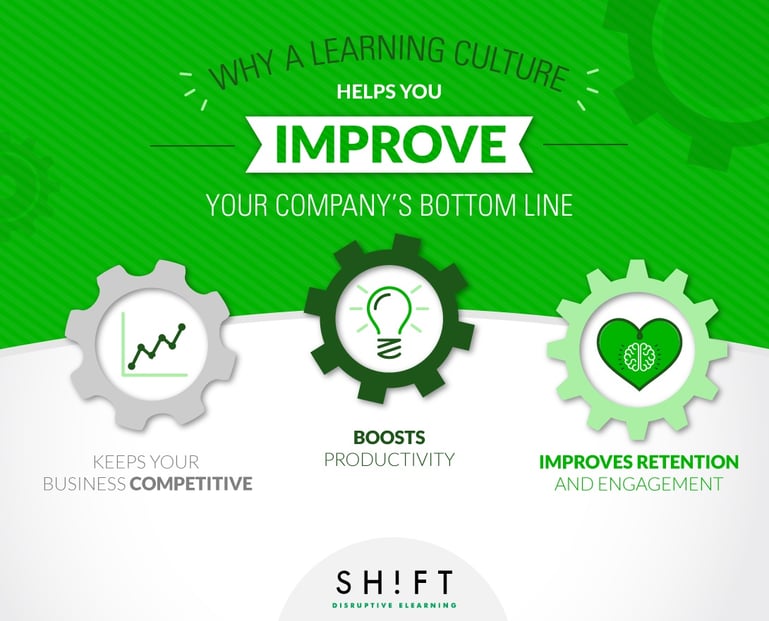Have you ever wondered why Nokia lost the game to Apple?
On the face of it, Nokia seemed to have it all—a slew of phones (from basic phones that just let you make calls to those Lumia models that pack in a mean computing punch), an invincible reputation for churning out quality products (that seemingly indestructible Nokia 3310), and a loyal customer base (if you owned a mobile phone, it had to be a Nokia).
And then came Apple, and the rest, as they say, is history.
The answer is simple: Nokia lost because it failed to learn.
Why do you think search engine companies have come and gone (okay, some like Yahoo and Bing are still hanging around in the shadows) but Google stayed on and is prospering by the day? There is a reason why Google is one of the most valuable companies in the world—it innovates.
So what are the lessons for your company?
Learn. Grow. Innovate.
It is a dog-eat-dog world of business out there. To survive, flourish, and lead the pack, you have to innovate and stay a step ahead of your audience’s desires and preferences. You have to stay on top of change, which, of course, happens at dizzying speed. You need to create and nurture a “culture of learning” in your company.
What does this mean? It’s about accepting change, embracing new knowledge, and adapting to innovations and then channeling these into the talent pool. Your employees are your assets. They are the change agents—the designers and drivers of innovation—who keep your company ahead in the game.
Your goal is to provide endless learning opportunities for your employees, so they can continuously learn new skills and hone old ones, imbibe new knowledge, and be on top of industry-specific trends and developments.

Here’s how creating a learning culture in your company helps improve the bottom line:
1) Keeps your business competitive
"With tougher competition, technology advances, and shifting customer preferences, it's more crucial than ever that companies become learning organizations". —David Garvin
Jack Welch, the former CEO of GE, also said that the ultimate competitive advantage in business is the ability to learn continuously and apply that knowledge to drive value. He was right with this.
Creating a learning culture is a sustainable source of doing business because:
- It enables employees to acquire, assimilate, and transfer new knowledge to create value.
- It enlightens and empowers employees, so they can rise to the challenges of performing ad excelling in a dynamic marketplace.
- It makes an enterprise agile by creating talent that can respond to disruptions quickly. The organization, as a result, evolves into a more powerful entity.
- It creates a pool of employees who are quick learners and flexible workers that can promptly respond to the shifting demands of a dynamic economy.
- It enables the C-suite to embrace technological innovations and weave these into the daily business processes of the company to reduce costs and wastage and drive up productivity and profits.
- It enables employees to harness the new ideas that are going around and mold these into solutions—products and services—for their customers.
Fortune and the Hay Group carried out a survey of “elite organizations” to find out what made them tick. And what did they find? These organizations value people (their employees) and want them to learn and evolve into partners, collaborators, and co-creators.
Must read: Creating a Learning Culture is a Must-Have to Gain Competitive Advantage
2) Improves employee retention and engagement
We have said this more than once: the predominance of learning opportunities at the workplace is one of the most powerful factors that drive employee engagement. A whitepaper titled Building a Smarter Workforce by Josh Bersin also hammers in the truth by underlining what it needs to create, nurture, and retain a “smart” workforce:
- Put in place a continuous learning cycle
- Implement new and inspiring models of leadership that encourage innovation
- Build a workplace where work is driven by passion
Becoming a company with a strong learning culture will transcend its role as a mere skill-building strategy and go on to become a valuable tool for employee engagement and retention.
Here’s how:
- An employee feels valued when you invest in his growth and development by providing him with a continuous stream of learning opportunities. Employee satisfaction translates into increased loyalty to the company.
- An employee is motivated to learn, grow, and give his best when you support him along his career path. A motivated and passionate employee is more productive, which, in turn, brings more rewards and recognition for him at the workplace.
- A well-designed, thoughtful, and relevant learning program is a powerful engagement tool by itself.
- Having in place a thriving learning culture draws top talent to your organization because of Millennials, in particular, want to grow in their careers fast and want to see that they are making a difference. They are starving for knowledge and new skills to pick up!
- By attracting people who also want to learn and grow as they climb the corporate ladder, you create a workplace full of passionate individuals who inspire one another. A passionate workplace is a powerful motivation for staying in a company.
3) Boosts Productivity
There’s a clear positive link between having a learning culture in the workplace and high performance.
Numbers don’t lie. Take a look at the following pieces of statistics that a study by Bersin & Associates has unearthed about companies with a strong workplace learning culture:
- Employees are 37% more productive than their peers at organizations that don’t value workplace learning.
- They are 58% more likely to have the skills in their talent pipeline to meet changing marketplace needs.
- They are 32% more likely to be the first to market an innovative solution.
- They have a 26% better track record of producing quality products and/or delivering stellar services.
- They are 34% more likely to respond faster to and satisfactorily address customer needs.
These numbers make a compelling case for creating a learning culture. Why?
- Well, a highly skilled workforce that is learning and innovating continuously is more productive and provides a definitive competitive advantage to the company.
- Higher engagement and retention rates enable employees to grow with the organization and imbibe its work culture and values. This creates a pool of motivated employees whose own career goals are in line with their company’s overarching business objectives.
- Employees who are on top of their skills and are aware of the latest best practices apply their knowledge to current projects and achieve more positive results.
- Companies with a strong learning culture foster employees who have a high sense of personal worth. They assume greater responsibility in whatever they do and are determined to make a success of every project they work on.
Passionate and motivated employees create more productive teams where members work towards a common goal and share harmonious (the we-are-all-in-this-together spirit) and mutually beneficial relationships. All these translates into increased ROI for the company regarding greater productivity, increased profits, and decreased attrition.
Also read: Motivate Employees to Participate in Training: 8 Ideas
Your Takeaways:
The before-mentioned numbers, insights, and analyses have, no doubt, got you excited! You are now probably raring to go and organize a few training sessions. Not so fast!
Companies that have a strong learning culture do not focus only on what to teach. In fact, that’s not even something to mull over much if you are clear about your organization’s business objectives. These companies instead concentrate on creating valuable and relevant “learning experiences.” Note once more, the emphasis is on creating “value” and here’s how:
- Think of learning solutions that overcome the constraints of classroom-based teaching. Consider online training programs. Read: Moving Your Existing Training Content to eLearning - A Step-by-step Guide to Successful Conversions
- Go beyond compliance courses. Design courses that help employees GROW.
- Offer bite-sized learning modules to your time-crunched, attention-depraved modern learner.
- Make it easy for your learners to learn throughout the different moments in their career. Also read: Learning Is Not a One-Time Event! Promote Continuous Learning
- Create an environment where learners can learn every day, even if it is a wee bit.
- Create informal learning opportunities where employees can learn by watching peers at work or interacting with a subject matter expert within the company via a social platform.
A strong learning environment can improve employee productivity by 14 percent. A thriving learning culture creates a pool of motivated employees who are driven to perform and excel. It is up to you to decide if you want people who work just for the paycheck and are eyeing greener pastures or men and women who have the fire in their bellies and a steely determination to be the best themselves and take their organizations to new heights?
Sources:
1. Creating a Learning Culture is a Must-Have to Gain Competitive Advantage https://blogs.oracle.com/oraclehcm/creating-a-learning-culture-is-a-must-have-to-gain-competitive-advantage
2. Building an Innovative Learning Organization by Russell Sarder
3. The Importance of a Learning Culture http://www.paintsquare.com/blog/?fuseaction=view&blogID=327
4. Why You Need a Learning Culture in Your Organization http://www.ttcinnovations.com/why-you-need-a-learning-culture-in-your-organization/
5. Why Your Company Needs a Learning Culture http://www.clomedia.com/2015/06/03/why-your-company-needs-a-learning-culture/


